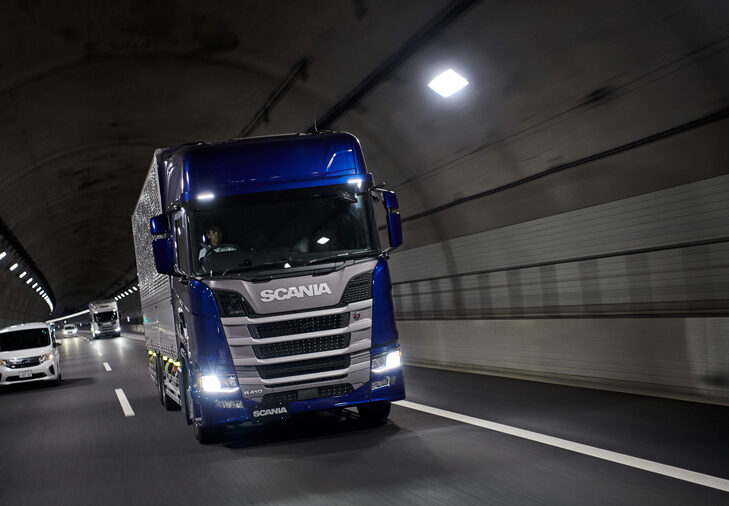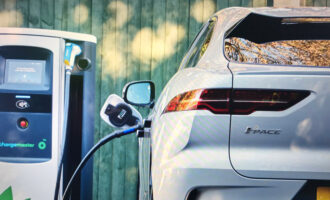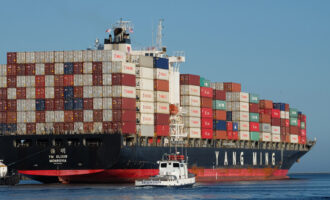
Decarbonising road freight: ACEA calls for smarter solutions
By Aaron Stone and Glenn Denton
Heavy-duty (HD) vehicles contribute roughly 5% of carbon dioxide (CO2) emissions in the European Union (EU). The EU intends to curb the contribution of this type of vehicle. On 13 June 2019, the European Council adopted Europe’s first ever CO2 standards for HD vehicles. The legislation requires new trucks to emit 15% less CO2 by 2025, and 30% less by 2030, compared to 2019 levels.
Critics say the targets are too demanding. Others doubt they will deliver the necessary reduction in emissions. “These efficiency standards for new vehicles will not be enough to bring down total CO2 emissions from road transport,” says European Automobile Manufacturers Association (ACEA) Secretary General Erik Jonnaert. Achieving these ambitious targets requires smarter solutions to decarbonize freight transport.
ACEA represents the 15 Europe-based vehicle manufacturers. Commercial vehicle members include DAF Trucks, Daimler Trucks, IVECO, MAN Truck & Bus, Scania, Volkswagen Commercial Vehicles, and the Volvo Group.
A large increase in freight transport demand is projected over the next three decades. Freight transport in Europe is expected to exceed 4,000 billion tonne-kilometre (t-km) by 2050, up from approximately 2,700 billion t-km in 2015. This growth in capacity requires substantial infrastructure investment. The problem is the rate of infrastructure development is insufficient to maintain pace with freight transport growth. Europe needs a cost-effective, efficient solution to decarbonise road freight with minimal infrastructure investment.
Half of CO2 emissions from HD vehicles are generated by regional and long-haul transport. ACEA, on behalf of Europe’s truck makers, is calling for the introduction of high-capacity transport (HCT), also known as longliners, to accommodate the growth in freight transport and to reduce carbon emissions.
On the surface, this is a logical move. Fewer vehicles on the road with a greater freight load on each. A May 2019 report by ACEA entitled High Capacity Transport – Smarter Policies for Smart Transport Solutions indicates HCT can carry up to double the freight of standard trucks. The report suggests HCTs are more efficient than smaller trucks, with lower fuel consumption and a potential CO2 emissions savings of up to 27%. This also provides a welcome relief for the current and projected driver shortage — at least until self-driving technology fills the void (which could be a long way off in the HD segment).
Several European member unions already employ HCT; such as Belgium, Denmark, Finland, several German federal states, the Netherlands, Portugal, Spain and Sweden; and have demonstrated on-road improvements in CO2 emissions.
This solution enables countries to maximise the efficiency of existing infrastructure, with HCT deployed on dedicated parts of the existing EU road network. It seems a no-brainer, particularly considering the quality of roads in Europe. The Global Competitiveness Report, released by the World Economic Forum, ranked four of Europe’s countries in the world’s top 10 for road quality.
Europe has identified the importance of mobility in spurring economic growth. However, many of the existing road networks were developed with a national outlook. The EU is in the process of building a Trans-European Transport network that links railways, roads, inland waterways and airports throughout Europe. The EUR700 billion (USD788 billion) investment will connect national road networks — including 90,000 km of motorway roads — facilitating an improved flow of goods between countries. Increasing the utilisation of existing infrastructure, with a more carbon-friendly solution, seems to fit the bill. So, what’s the delay?
ACEA is urging policymakers to deliver a carefully planned policy framework that encourages HCT. The policy should ensure that vehicle characteristics and usage is suitable for existing and planned road infrastructure, as defined by performance-based standards (PBS). In particular, the association called for the abandonment of restrictive interpretations of EU legislation regarding cross-border high-capacity vehicles in the form of European Modular System (EMS) combinations.
The report suggests that regional and cross-border use of HCT is critical to the overall savings that HCT can deliver and is likely to impact market penetration. Equally critical to realizing productivity and fuel consumption benefits are incentives that encourage usage, says ACEA. Legislators in Europe seem to be taking notice, with the European Parliament recently calling on the European Commission to introduce incentives to encourage deployment.
The introduction of HCT tends to face opposition as it is an emotionally charged topic. The perception is that heavier, larger vehicles increase the risk of traffic casualties, cause pollution, damage roads and bridges. The data from HCT programmes in numerous countries and environments suggests otherwise, says ACEA. Too often policy is based on emotional argument rather than data, they say.
Well-regulated HCT programmes have been shown to deliver improved safety performance versus regular heavy goods vehicles. And, despite double the load, evidence points to lower levels of road damage per tonne of cargo transported. Regulations around axle weight and configuration means the total load is distributed over more axles and is, therefore, less damaging. The truck manufacturers representative body wants the policy to be based on objective data and research. The revision of a 2011 white paper on transport policy offers an ideal starting point for the harmonised rollout of HCT requirements throughout Europe, says ACEA.
However, the report cites the need for improvements in intermodal freight solutions to optimise the benefit of HCT. Some evidence suggests “high capacity vehicles attract little to no freight from railways and inland waterways” with the lack of integration attributed to the type and value of the cargo and logistical requirements around delivery. While the HCT sweet spot seems to be in the replacement of smaller, less efficient trucks on intensively used routes — there is an opportunity to improve the success of HCT by uniting rail and road transport with better intermodal solutions. Additional research on intermodal freight is required to understand the prospects that improved intermodal solutions present, says ACEA.
echo '






